|
During the past year, I made several trips to Ronceverte to help organize the city museum at its new location on the second floor of the Clifford Recreation and Community Center, following the sudden passing of Doug Hinton, the long-time curator of the museum. My primary objective was to inspect more than 50 boxes of artifacts and documents and prepare a computerized catalogue of the contents, which I completed. In a random box, I discovered an incredible, priceless piece of West Virginia history: a 1796 land deed from the Governor of the Commonwealth of Virginia to Alexander Robison of Greenbrier County! It was folded firmly and stored in an envelope for many years, and I refused to harm a 200+ year old document by attempting to unfold it. Instead, I found a donor and researched a firm that could safely unfold, flatten, and frame the deed. I found a professional artifact restoration firm in Ohio, Old World Restorations in Cincinnati. They did an amazing job of safely unfolding the deed document, flattening it, and framing it in archival glass. I was proud to hand-deliver the framed deed to Mayor Smith in Ronceverte in April 2021. I discovered many other gems in the Ronceverte Museum’s collection. Highlights from the 50+ boxes include the following: 1. 3 body tags with wire attached with notes from coroner; two have no date, but one is marked 'found May 23, 1963.' 2. 1880 Two small original photographs of West Virginia native Pearl S. Buck's parents Reverend Absalom Sydenstricker and Mrs. Caroline Stulting Sydenstricker in 1880. 3. "Good for 5 cent" tokens, five total. Rare. Often called trade coins, they were especially used after the Civil War as a substitute medium of exchange instead of nickels; they had limited use and were often issued by a private company, group, association or individual. 4. 1890s-1902, Set of funeral home or cemetery plot records in delicate, damaged condition. Interesting look into what people died of in Ronceverte in the late 19th and early 20th century. One page has a record of a black man who was killed, but he was not given the dignity of his name, age, date of death and location like the white West Virginians on the other pages.. 5. 1881-1889, book of State of West Virginia court judgements. If you take the time to read the handwriting, it has an interesting look into what was brought to court in late 19th century West Virginia. 6. 1885-1887, three autograph books; two of Nellie Longfellow, one of Laura Forgelson. Very cute entries from school friends and family members. 7. Some kind of Ronceverte athletic uniform from the 1950s-1970s of a top and shorts, jockstrap included! 8. White folder with material relating to petitioning Colonel Clifford of Ronceverte for the Medal of Honor. He served with distinction in World War II and the community center housing the Ronceverte museum is named after him. It is worth noting because not many people know about what goes into the process of petitioning for a Medal of Honor. 9. Register of Hotel Dickson, Ronceverte 1888, including a signature of President Glover Cleveland with a cute notation “and Mrs. C” from October 11th, 1888! During my final visit to Ronceverte at the end of my AmeriCorps term, I cleaned all the exhibit cabinets, window wells, and floor. I compiled all my work and ideas for the future of the museum into a Final Report, which I presented to Ronceverte City Administrator Pam Mentz. The report includes suggestions on how the city can engage the local schools and further preserve their collection. The Ronceverte Museum has great potential, and the Final Report for the next AmeriCorps member assigned to Ronceverte will help them build off of my service. It was my sincere pleasure to work with the city of Ronceverte and discover the jewels contained in its museum. Megan Ksenia bradnerMegan Ksenia Bradner served as a Preserve WV AmeriCorps member with the Preservation Alliance of West Virginia during the 2019-2020 and 2020-2021. Preserve WV AmeriCorps tells the story of two historic churches through new interpretive signs9/15/2021
The Monroe County Historical Society was awarded a grant from the West Virginia Humanities Council for the creation and installation of interpretive signs for the two historic church buildings owned by the society in Union. Both buildings have undergone extensive repairs over the past two decades. Ames Clair Hall, formerly the Ames Methodist Episcopal Church, is available for use as a performance and meeting space. The First Baptist Church building still requires extensive repairs before it can opened to the public. Both of these churches were originally built for the white congregations and after the Civil War were purchased by the African-American members of the congregation. One man, James Clair, and his descendants were instrumental to the formation and success of both the Baptist and Methodist congregations and these churches. James Clair was baptized into membership at the First Baptist Church in Union in 1868. His family remained active in the community. His son, James Clair Jr. was also baptized into the First Baptist Church. His grandson, Matthew Clair, became one of the first two African-American bishops of the Methodist Church. The slave James Clair was born in 1810 and was purchased in Richmond Virginia by the owners of the Salt Sulphur Springs resort to work at this resort in Monroe County. While the owners of the resort rode horses back to Monroe County, the slaves had to walk about two hundred miles to the “Salt”. Mrs. Kate Clair, a daughter-in-law, relates that the slaves were guided on their journey by forked sticks placed at the forks in the road to indicate which way their owners had taken. Generations of church members have worshipped in these two historic churches. Both buildings were deeded to the Historical Society after membership declined. Justine Nall, of Union, got the project started. Her father, Russell Newsome played the organ for services when Ames Clair Hall was the Ames Memorial Methodist Church. Marilyn Adamson provided information about the First Baptist Church where she, her great-grandmother, grandmother, and parents worshipped. Photos show the interpretive signs installed. The signs will help expand the knowledge of the buildings and the importance of the church community on the wider community for the people of Monroe County and surrounding areas. This project received financial assistance from the West Virginia Humanities Council, a state affiliate of the National Endowment for the Humanities. Any views, findings, conclusions, or recommendations do not necessarily represent those of the West Virginia Humanities Council or the National Endowment for the Humanities. Vernessa PontiusVernessa served as a Preserve WV AmeriCorps member with the Monroe County Historical Society in Union during the 2020-2021 service year. 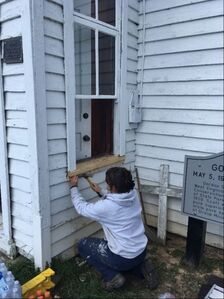 Hillsboro, WV, is a small town that packs a big historical punch. It’s home to the Pearl S. Buck House, Watoga State Park, and another lesser known gem – the Pleasant Green Methodist Episcopal Church. This historic African American church is so modest and unassuming that most passersby probably barely even realize that it’s there, but I’ve been fortunate enough to learn its heartwarming history and assist in its restoration during my time as an AmeriCorps Member here in West Virginia. I was first introduced to Pleasant Green in October 2019 while serving with the Appalachian Forest National Heritage Area’s Hands On Preservation Team. It was the first month of our service term and my first time doing official preservation work in the field, so I knew almost nothing about what I was doing and even less about the site itself. We were greeted by Ruth Taylor, Secretary of the Pocahontas County Historic Landmarks Commission and the church’s next-door neighbor, who told us all about Pleasant Green’s history. Built in 1888, the site was specifically designated at the time of sale for use as a church and school for the growing number of black families in and around Hillsboro. Pleasant Green was a branch of the African Methodist Episcopal (A.M.E.) Church, an African American-based denomination founded in Philadelphia in the late 1700s that grew popular throughout West Virginia following the Civil War. The congregation built and maintained the structure themselves with any materials they could scrape together, making Pleasant Green a true testament to people doing the best they could with what they had. The church remained a cornerstone for the local black community all the way up through the 1970s, acting as a place of social gathering and of education as well as one of worship. The adjacent cemetery became the final resting place for most of the congregation as well, with approximately 50 marked graves and many more unmarked ones suspected. Two of the people buried there were not just beloved community members but notable historical figures: “Miz Eddy” Washington, a well-known cook at Watoga State Park and former employee of the family of WV Governor Wallace Barron, and Gordon Scott, the first African American to become Superintendent of a WV State Park. Over the years, as families moved and the once-thriving congregation dwindled away, the church unfortunately fell into disrepair. On top of the chipped paint, rotting wood, pest damage, and other woes that typically plague old buildings, a fierce hailstorm in 2016 broke the glass in almost every one of the windows. The hail damage was especially disheartening, as it left the interior extremely vulnerable and destroyed multiple panes of rippled, amber-tinted “rootbeer glass” – a simple but beautiful decorative element that would have been very costly for the congregation and a point of pride on the otherwise unadorned structure. Luckily, Ruth was able to have the Hands On Team come in to repair and reglaze the historic wooden window sashes (saving and reusing all the surviving rootbeer glass in the process). At that time, however, the team and I were not able to carry out some additional work that we realized needed to be done to the windowsills. So, when I finished that service year and began my current one with the Preservation Alliance of West Virginia, I already had a plan in place to return to Hillsboro for my upcoming civic service project. There are four large windows on the body of the church and two very small windows on either side of a vestibule that was added to the front façade at a later date. Because the larger windows were paired with equally large sills cut from single pieces of old growth hardwood, those four sills all remained in relatively good condition. These simply needed to be scraped, treated with consolidant to reharden the “punky” (or softened) wood, and repainted. The sills for the smaller windows, on the other hand, were much worse. The vestibule was a poorly constructed addition using lower quality materials and has not aged well as a result. Nearly one third of each of these two sills had completely rotted away, making a full replacement necessary for both. Fortunately, these sills were only 1-inch thick boards inserted very simply into the overall frame, so replacing them wouldn’t be very difficult (I hoped). After visiting the church to make this assessment in Fall of 2020, Ruth and I planned for me to come back and complete the project in conjunction with a cemetery cleanup event to be held on Earth Day of 2021. I then spent the rest of the Winter being anxious and concerned that I might have committed to a project too big for one novice preservationist to successfully complete solo (since, as anyone who has ever worked on an old building can tell you, you never know what you’re going to find when you start poking around and even the simplest-seeming projects can quickly turn more complicated). Thankfully, Ruth helped put my mind at ease by reminding me that Pleasant Green has always been what she lovingly calls a “patchwork church” – it’s not all perfect, and it doesn’t all match, but everybody doing their small part to keep it stitched together over the years is what the true spirit of this place is all about. So, with that reassurance in mind, I returned to Hillsboro this past April and got to work. Everything miraculously went according to plan, and I was even lucky enough to be joined by another volunteer who was a master carpenter and could help me make the cuts on the new replacement sills. As I worked on the sills, other folks cleared away the overgrown brush from the cemetery or cleaned up the inside of the church to turn it into a community space once again. At the end of the day, as I stood back and looked around at all the progress that had been made, I couldn’t help but remember how the site looked when I first arrived to work on the windows two years before. The church’s restoration and continuing survival is truly a product of 130 years of collaboration and faith, and I’m so proud to have been a part of it. Kelsey RomerKelsey Romer is the Preserve WV AmeriCorps member serving with the West Virginia Brownfields Assistance Center's BAD Buildings Program during the 2021-2022 service term. 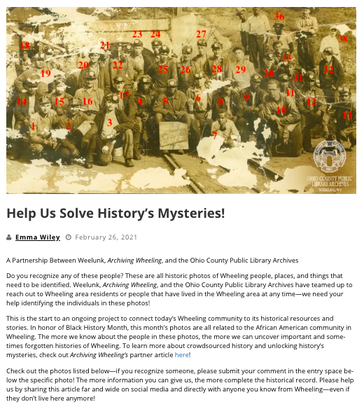 How do you engage the community with history during the time of COVID and social distancing? As more of the population gets vaccinated and the country starts to open up, many historical institutions and organizations are itching to restart in-person programming and events. However, the pandemic and the shift to everything virtual opened a door to creatively exploring ways to get communities to participate in local history. History’s Mysteries is a digital crowdsourcing partnership project between Weelunk, Archiving Wheeling, and the Ohio County Public Library, that solicits photo identification help from the Wheeling community. As the primary history collecting archive in the county, the Library has hundreds of photos of Wheeling people, places, and events that are unidentified. While these photos are important snapshots of Wheeling’s history, our knowledge is limited when they are unidentified. Once a month, we choose five photos based on a theme from the Library Archive to feature on Weelunk with an entry form where people can submit identification information. Our two goals were: 1) to get photos identified and therefore enrich the historical record, and 2) to engage the local community in the history that it has created. The reason for including the community in this form of creating history is because “historians have an important job of verifying, analyzing, and interpreting history, but it is the entire community that is responsible for maintaining and expanding the stories, records, and narratives that create the foundations of their society. Sometimes history’s mysteries just need someone with the right key.” Through History’s Mysteries, people who had never stepped foot into the Library recognized their mother or grandmother online--in some cases, they were photos they had never seen before. Expansion of the internet and digital technology has made it possible to reach a wider audience and engage with people who may not walk into the physical space of the Library. To increase our chances of identifications, we leveraged social media to get the project in front of as many people as possible. In addition, since many of the photos are older and therefore would only be able to be identified by the older population who is less likely to be on social media, the Library printed and distributed brochures with the photos for those who prefer paper. Not only does History’s Mysteries allow us to restore identities to the unnamed, but it educates the community on the resources and services the Library provides. When we started this project, we told ourselves that even just one identification would make this project a success in our book. One identity, one story, one life remembered would be worth it. Yet, we are pleased to report that with three monthly editions of History’s Mysteries under our belt, we have identified twenty-eight people so far! If you know anyone with connections to Wheeling, please forward them our History’s Mysteries Project--we are always trying to fill in the gaps! Emma WileyEmma Wiley is the Preserve WV AmeriCorps member serving with Wheeling Heritage during the 2021-2022 program year. 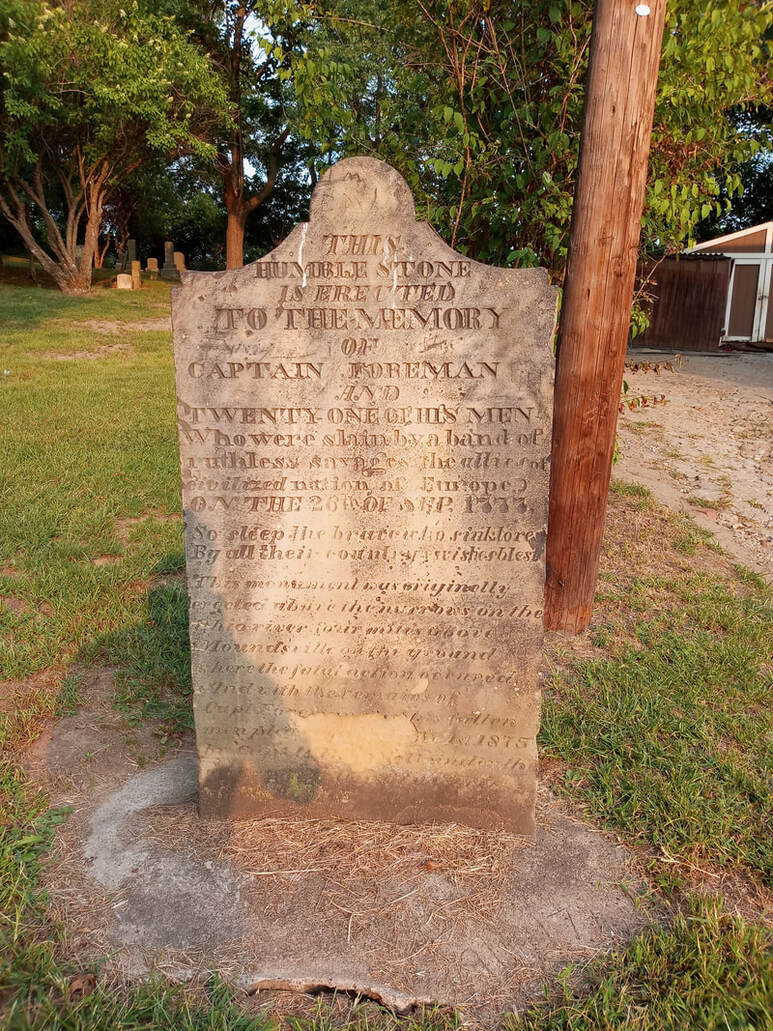 The Foreman Massacre took place on September 26, 1777 at the Narrows just north of Glen Dale, WV. Captain William Foreman and twenty-one militiamen from Hampshire County, Virginia were killed in an ambush by indigenous warriors. In 1835, a light horse company in Elizabethtown (now Moundsville, WV) raised money for and put up a sandstone memorial headstone at the Narrows where Foreman and his men’s remains were buried after the attack. Then in 1875, the stone and remains were moved to Mt. Rose Cemetery in Moundsville, WV by the County Court (now County Commission). The stone was placed in a concrete puddle in 1974 and is in very poor condition. The sandstone is cracking off on the front and back of the stone and there are many chips and cracks on the sides. The front has the historic inscription on it so will not be addressed in my civic service project because a skilled mason conservator would be needed to repair it. The back, however, is something I can help with. I have done a great deal of research on gravestone preservation over the last few months. I consulted skilled conservators Bekah Karelis and Sarel Venter of Adventures in Elegance based in Wheeling for advice on my project. Funding for my project is still pending but I purchased Natural Hydraulic Lime 5.0 from Otterbein and a consolidant from Bellinzoni called Strong 2000 that will be used in the preservation work. First, the damaged part of the stone that is falling off will be removed and the consolidant will be applied with a paintbrush. The stone will be completely saturated with distilled water and the lime putty will be plastered on and covered with wet burlap to cure. Once dry, it will be lightly sanded down until flush with the original stone. Then the cleaning process will begin with distilled water and a soft bristle brush to remove the green organic growth and black carbon residue. In the heavily soiled spots, D/2 Biological cleaning solution will be used. Once these steps are completed, the stone will look better and be preserved for many years to come. Pending additional funding, I would like to also take the project further and place a clear acrylic box around the stone to protect it from weather and pollutants. I also would like to place a granite plaque next to the Foreman Stone that has the inscription written out so it is easier to read, a summary of the massacre, and the stone’s journey from the Narrows in 1875. Bekah and Sarel also recommended the concrete puddle surrounding the stone be lifted out of the ground and a plastic sheet be placed under it to further help protect the stone from weathering. Once this project is completed, this portion of Marshall County’s Revolutionary War history will be looking its best! Evan WennerEvan is the Preserve WV AmeriCorps member serving with the Cockayne Farmstead for the 2020-2021 service year. In March of 2018, Bryson VanNostrand of VanNostrand Architects approached me at a conference with a very intense “suggestion”. He told me to make sure I let the City Manager know that Hinton HAS to do something with the Hardwoods Building. He then later spoke on a panel at the conference. Everything he talked about on the panel spoke to me. He was my type of community leader! Being very new to Hinton and to the Economic Development Scene, I really didn’t know which building he was talking about. I had recently submerged myself in the land of Volunteerism, and this was just another conference I was adding to the list in hopes of understanding what I need to do here. What was my calling? Shortly after, coincidentally, Hinton was offered some Technical Assistance Funds through the West Virginia Community Development program HUB CAP. Our team was huddled around a table coming up with ideas. I suggested getting the Hardwoods Building structurally analyzed. For some reason, this mission was burned in my brain. The team was supportive, the building was in need, and I knew just the person that had the heart in the project. I learned then, not everybody is into historic preservation. I didn’t even know it was important to me. I was just merely following through with a firm suggestion and happened to be in a position to get it done. I also knew if anybody was going to do it and do it right, it would be VanNostrand Architects. About a year later, through all of my volunteer work, an AmeriCorps opportunity with the Hinton Historic Landmarks Commission opened up. This was such an important move for me. I was now able to focus on all the work I had been doing, and in a capacity to see more projects get done! To get compensated for doing dream work, is an absolute dream! The Hardwoods Building never left my sight. I dug for hours to find any and all information on this structure. It was historically known as the New River Grocery and is located in Hinton’s heart of the Railway Development District. This structure has been identified as the 6th most important historic structure in the Hinton Historic District to be rehabilitated. It is a three-story brick and timber structure, and was originally built as a grocery House, hence the New River Grocery. What it’s most known as to the community, was a roller rink back in the 60’s, 70’s and 80’s. Lots of people remember going on their first dates here, birthday parties, and skating for hours and hours, Great memories were made on every inch of that property. Most recently it housed a woodworking shop, specializing in garden needs, called New River Wood. When this tenant vacated, they left all their woodworking equipment. Most of the equipment was not useful to hobbyists, seeing as they were machines built for high power. By now, the City of Hinton had acquired the property. The City also had no use for the equipment, and it was just sitting in the way of helping visualize what a great space this could be! Among the heavy duty machinery, there were what seemed like decades of saw dust, and just overall mess. I have come to the conclusion, I may be the only person interested in preserving this building. The City didn’t have capacity to seek funding, and this poor building sat vacant. Deteriorating more every single day. Every rain drop that fell, compromised the structure just a little bit more. The roof was failing quickly and something needed to be done fast. In efforts to make the building more appealing to anyone that was in the right position to listen, I happily offered up to clean the building up as my AmeriCorps Civic Service project. I figured it would be easier for people to understand the beauty of the building if it looked nicer. Plus, the effort was relatively free for the City. Win! Win!! After a successful clean up, I then took inventory of all the equipment. Being that it was City property, an auction would have to take place. I was crossing my fingers, hoping there would be enough money generated to help stabilize the building. I was sorely wrong. The money raised was just a drop in the bucket. However, there were lots of new owners of old equipment that got an extremely great deal on really expensive pieces. By this time, I am feeling defeated. I did not know what to do. Fortunately, I attended a Summit about a month after the Auction and ran into our old community Coach with the HUBCAP program, Kaycie Stuschek. She suggested applying for the Development Grant with the State Historic Preservation Office. It was due in about a month, which wasn’t much time, but I knew I could get this done. Up to this point, I had loads of information, pictures, stabilization quotes, everything I could possibly need! Now it was time to write my first big girl grant! The grant application was accepted. Covid happened. It took almost a year to receive the Bid package and get things moving in the direction we have been shooting for. During that year, the building crumbled more. I had thought the previous condition was bad until I walked in recently. It became worse, in the matter of a few months. Thankfully, I had my trusty ol' architect, Bryson, lend me an hour of his time to see what damage had been done. It wasn’t good. However, there is light at the end of the tunnel. I am currently writing another grant application to hopefully secure 100 % of the funds to get the deterioration to come to a complete stop. Meanwhile, we will soon be accepting bids to fulfill the first round of grant money. This has been a long process. Lots of faith, patience, and work has taken place. Maybe this is why historic preservation isn’t for everyone? I am bound and determined though to save this structure! The Hardwoods Building is extremely important to how Hinton became the booming town it once was. In my mind, this building could do it again for another century, but probably more like two. If you are interested in donating to this project, you can send a check to City Hall c/o Hardwoods Stabilization 322 Summers St. Hinton, WV 25951 CANDICE HELMSCandice Helms is a Preserve WV AmeriCorps member serving with the Hinton Historic Landmarks Commission. My name is Candice Helms. I am currently serving my 3rd term as an AmeriCorps Member with Preserve WV. AmeriCorps has been an instrumental part of me establishing this new community as my own. It has helped me be part of the "greater good" in efforts to help provide my son with a bright future within the community. Of all my Civic Service Projects I have done, cleaning up the Esquire Cemetery has been the most fulfilling project to date. Esquire Cemetery was deeded to the trustees of the town of Hinton in 1892. It was established that this would be a "colored" cemetery. On December 12, 2020, the day I conducted this project, about 25 people came out and really uncovered a great deal of History. There were Veterans' graves that haven't seen the light of day. Veterans as early as the Spanish American War. There were also prominent doctors, pastors, and relatives of community members that live here today. This project has organically spun into other projects. For instance, I highlighted a handful of some of the people buried in the Cemetery on the FB page I created. The posts generated lots of memories from around the community and also had an overall positive vibe. From these posts, I keep learning the History and have made relationships that have invested time to helping the Black Community preserve their, OUR, History as it happened. Candice HelmsCandice has served as a Preserve WV AmeriCorps member with the City of Hinton's Historic Landmarks Commission between the years of 2019 and 2021. When I first started my service term at the Martinsburg Roundhouse, I was familiar with historic tourism but I didn’t know anything about the roundhouse. Though I grew up in Martinsburg I had only visited the building once for a local festival. I didn’t really learn any of the roundhouse’s history until I started my service. Prior to meeting the site supervisors at the interview, I didn’t know anyone who volunteered or knew a lot about it. The first project assigned to me at the Martinsburg Roundhouse was to create an inventory of the numerous artifacts housed at the site. It is also the project I have worked on the longest and there are a few remaining artifacts that need to be tagged. When I started this process I felt overwhelmed. There are hundreds of items and documents stored at the Martinsburg Roundhouse. And new artifacts come into the site a couple of times a month, typically donations made by family members whose fathers and grandfathers worked at the roundhouse. Creating an inventory and tagging artifacts at the roundhouse has involved looking at lots of railroad spikes and railroading tools. I occasionally have been completely stumped about what an object is. Part of the process of researching and identifying the unknown objects at the roundhouse has been the extensive use of Google Lens and online railroad tool catalogs. During this project, one of my favorite ways to identify artifacts has been by collaborating with past and current railroad employees. One of the people I have talked to about the variety of tools and objects at the roundhouse is Jim. Jim worked at the Martinsburg Roundhouse from about 1949 until 1985 when jobs were moved from Martinsburg to Barboursville. During his visits to the roundhouse, Jim has identified several objects. Some of the more peculiar pieces, the ones that he struggled to or wasn’t able to identify, he told me were specialty made at the Martinsburg shops to address a specific need at the time. Another person who has been helpful as I attempt to name these objects is Mark. Mark works for CSX and is supervising an ongoing project in Martinsburg, and is frequently on the roundhouse property. Yet Mark’s connections to the roundhouse are deeper than working for CSX, Mark’s great-grandfather worked at the Martinsburg Roundhouse shops. Throughout the late summer and early autumn, he has made several visits to the roundhouse, including coming on a tour of the site with his mother and daughter. During his visits to the roundhouse, Mark has been incredibly helpful in identifying the artifacts housed in the roundhouse. One day I was losing my mind trying to figure out what an object was. My running theory was that it was a bucket from a digging tool. I was exhausting my enthusiasm for research by scrolling through website after website. Then Mark walked into the office, picked up the object, and casually told me that what I was looking at was a rail brace, which sits against the rail supporting it. Mark has been helpful in other ways. He also brought in a retired railroad worker, Stevie. Stevie helped me identify some of the more challenging artifacts at the Martinsburg Roundhouse. The volunteers and board members care immensely about the artifacts at the roundhouse. Volunteer and tour guide, Mike Giovannelli, brims with excitement every time he leads a group into the site’s artifact room. Yet I have found that some of the people who care the most about the artifacts are those who have worked on the railroad.
Claire TryonClaire served as a Preserve WV AmeriCorps member with the Berkeley County Roundhouse Authority during the 2019-2020 program year. Maintenance Deferred: Adjusting Plans for a Historic Preservation Project during a Pandemic10/19/2020
Within the New River Gorge National River, the National Park Service is responsible for maintaining a staggering number of assets and resources. This list includes 27 administrative buildings, 9 campgrounds, 11 public restrooms and 16 vault toilets, 5 staff housing units, 2 year-round and two seasonal visitor contact stations, 131 miles of trail, and 35 miles of roads. It requires a huge amount of labor, money, and time to maintain the assets listed above, and much of the park’s maintenance staff and budget are devoted to that purpose. Not listed above, but certainly worth attention, are the three historic farmhouses that the NPS owns on River Road near Hinton. For my civic service project, I planned a project to stabilize one building at one of these three historic farms. The plan was to install water bars and a French drain around a spring house to prevent the continued accumulation of sediment on and around the building. Carpentry repairs would also be made to the buildings walls and door, which had rotted from prolonged exposure to sediment and water. This work, like a lot of small but important tasks at the park’s lesser-known historic sites, would go a long way towards preserving the building. Unfortunately, the COVID-19 pandemic postponed the project, and I was left wondering if it could be completed at all. In mid-summer, the project was revisited and re-imagined. It was deemed unsafe to work with volunteers, but the park’s maintenance staff and an AmeriCorps crew from the Appalachian Conservation Corps were available for the task. With these resources we were able to expand the scope our project to include not only one building at one farm, but the entirety of all three farms on River Road. On the day of the project, we had over 30 people working on different tasks between the three farms. Downed trees were cleared, grass was mowed, gutters were cleaned, ivy was removed from the outside of buildings and debris was cleaned from their insides. The stabilization work at the spring house also went off as planned. These tasks, though small, are often lost in the shuffle of the park’s busy day-to day maintenance operations. The day also provided the park’s maintenance staff a chance to safely work together on a common project in a year where large gatherings of people could not be held. Some people involved in the project had never been to the farm where they were working, and I really liked how this work day allowed them a chance to learn about and appreciate another site in the place where they work. Though my civic service project did not go the way of my original plan, I was very pleased with how it turned out. In a year where so many things had to be cancelled or set aside, it felt good to work with the staff at the park to adapt to challenging circumstances and develop a plan to safely carry out an effective project to care for some important, though sometimes overlooked, historic resources. Will WheartyWill was the Preserve WV AmeriCorps member for the New River Gorge National River's Maintenance Division during the 2019-2020 program year. |
Preserve WV StoriesCategories
All
Archives
August 2023
|
Get Involved |
Programs |
Contact UsPreservation Alliance of West Virginia
421 Davis Avenue, #4 | Elkins, WV 26241 Email: info@pawv.org Phone: 304-345-6005 |
Organizational Partners:
© COPYRIGHT 2022 - PRESERVATION ALLIANCE OF WEST VIRGINIA. ALL RIGHTS RESERVED.


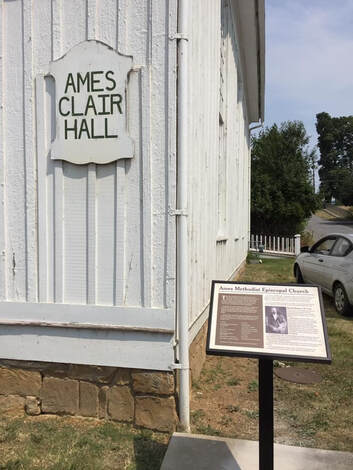
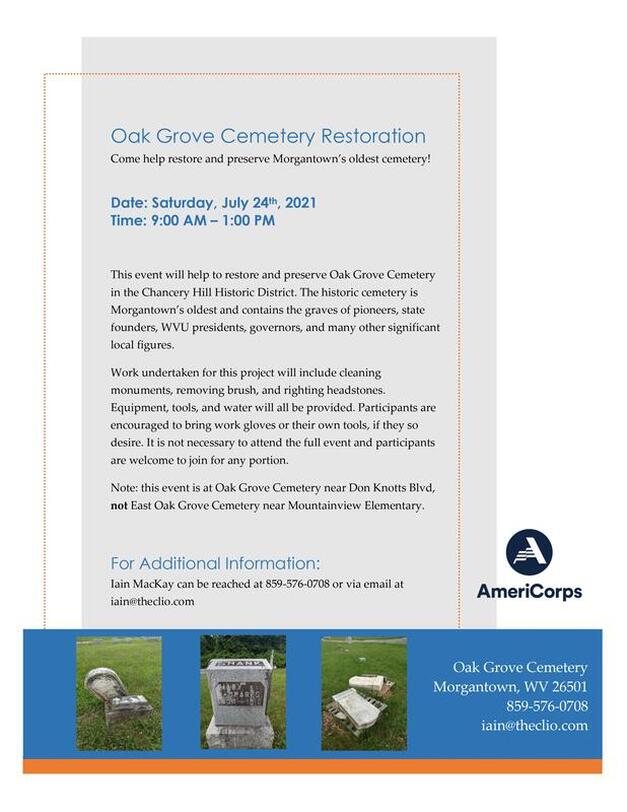
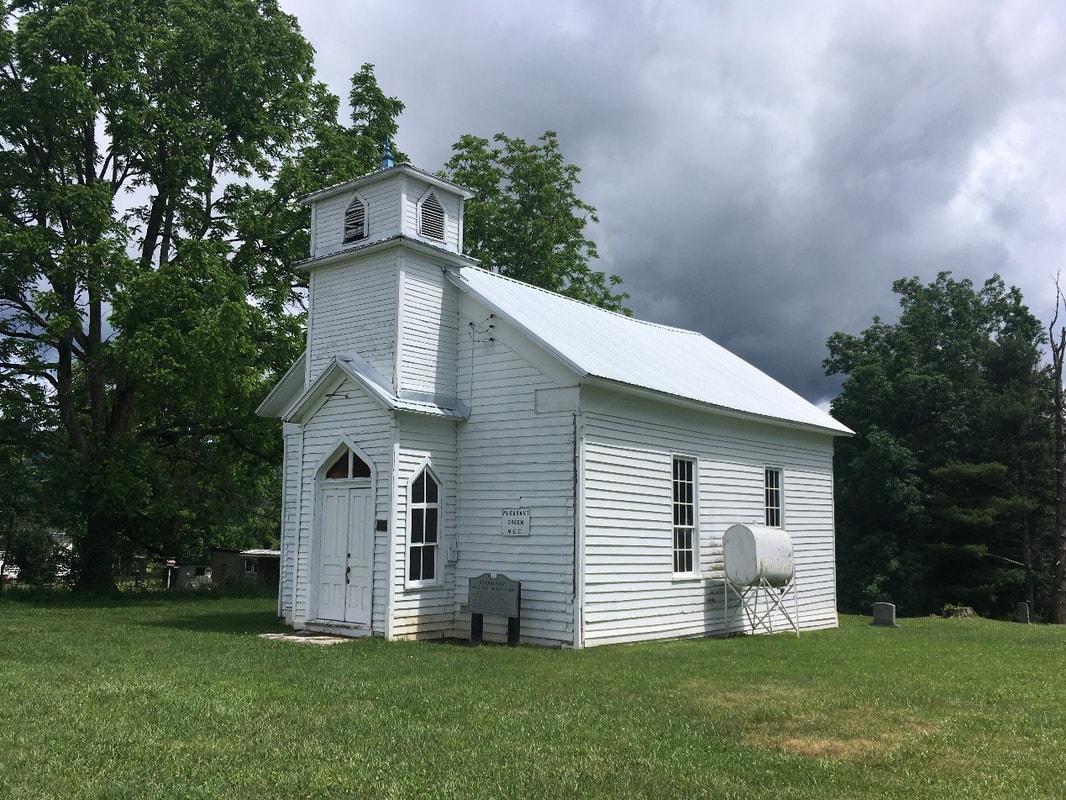
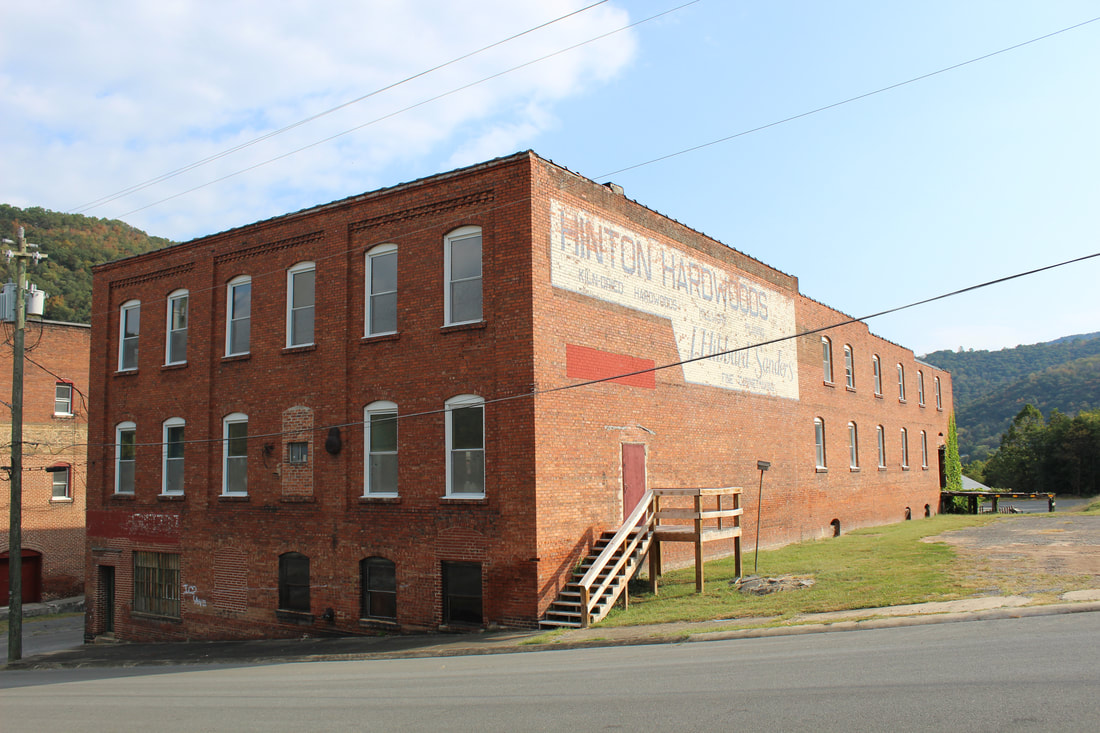
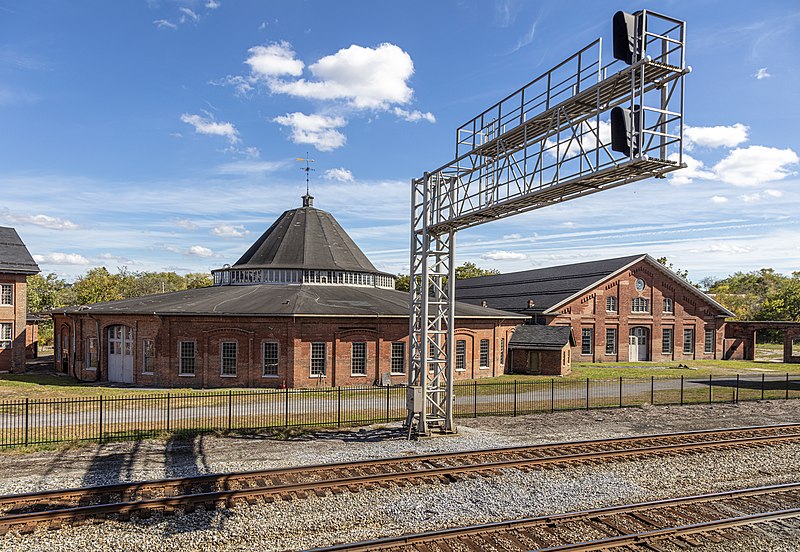
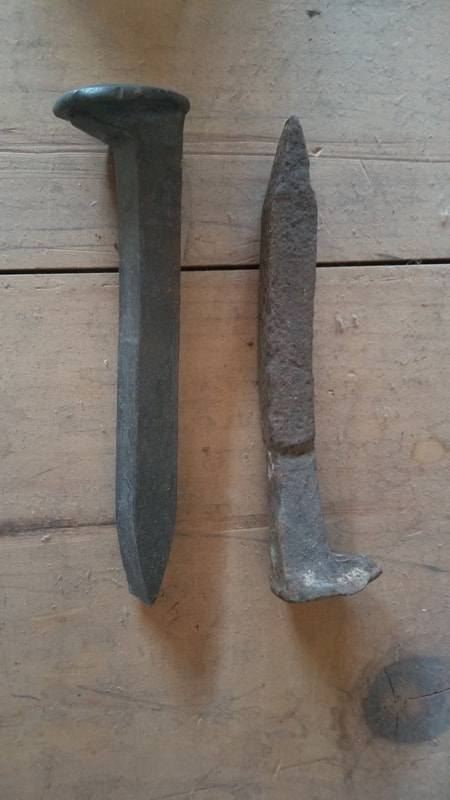
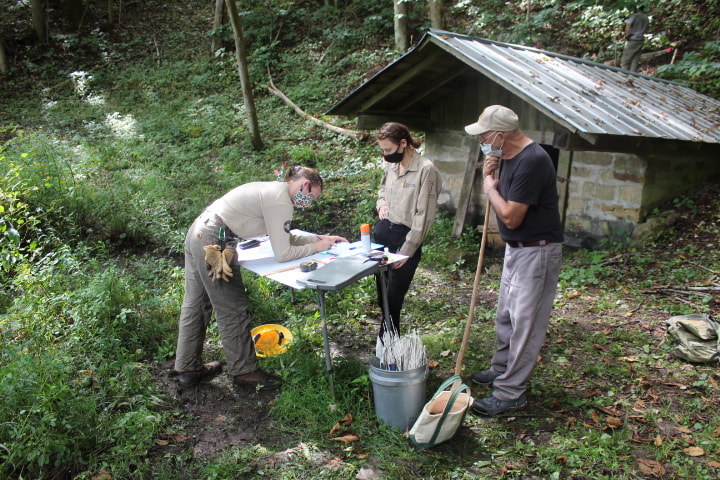
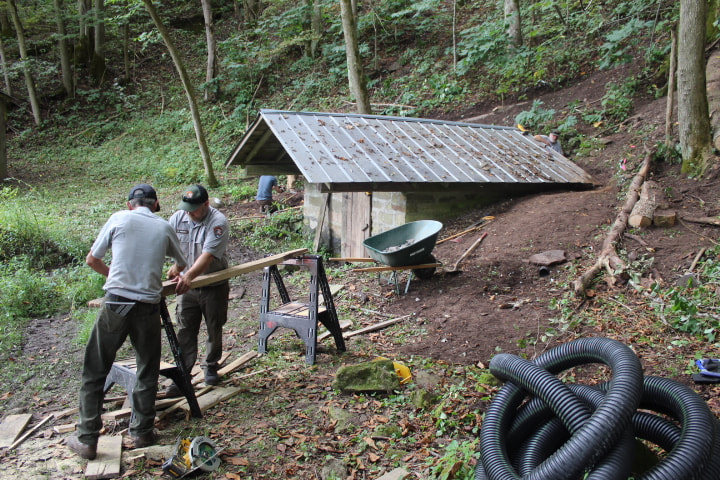
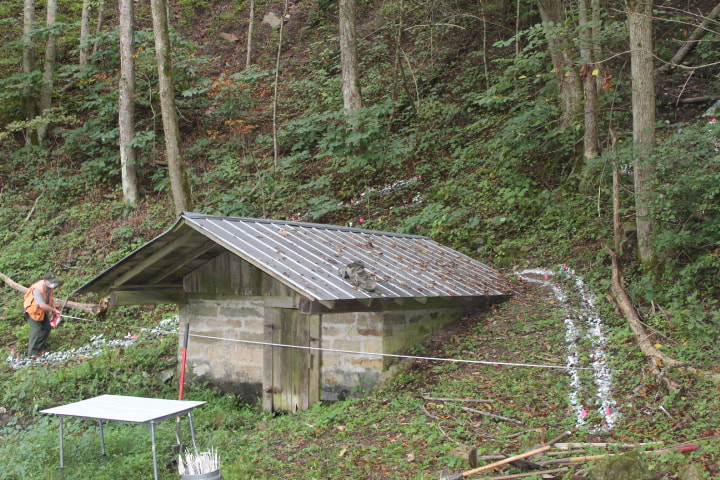
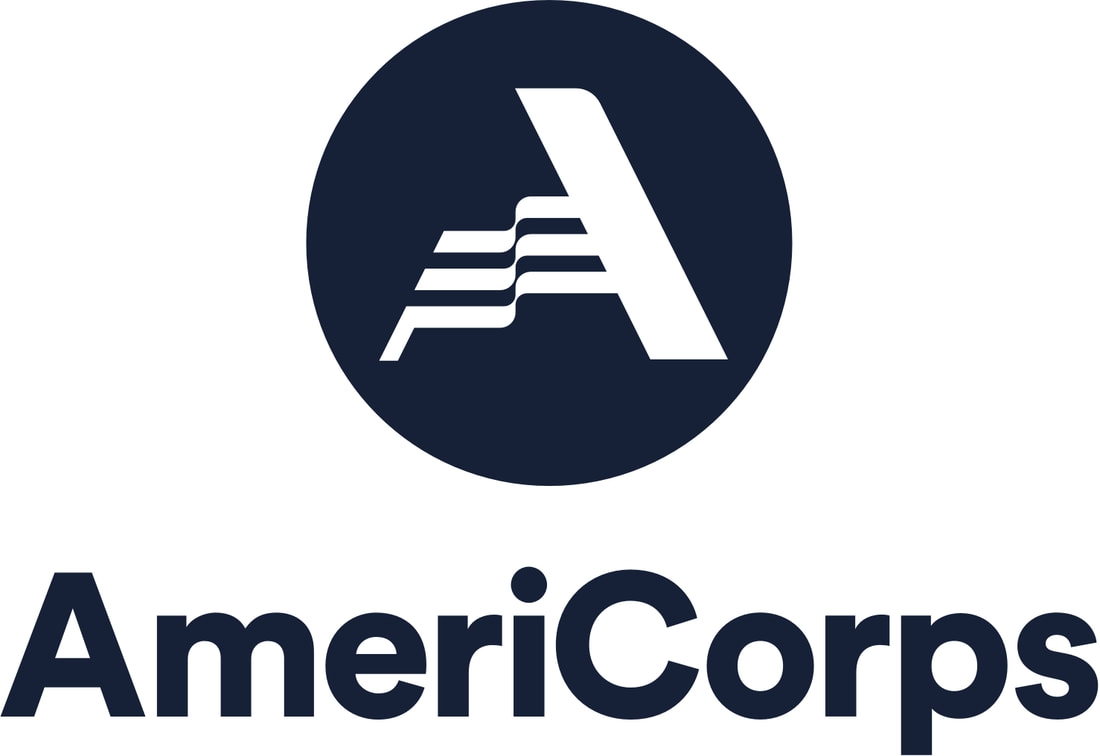
 RSS Feed
RSS Feed



